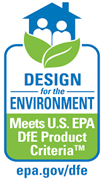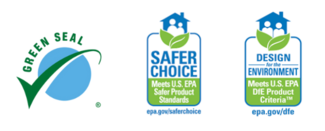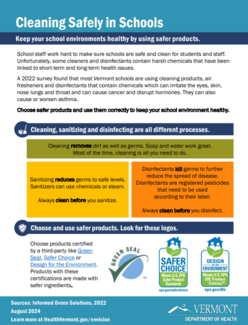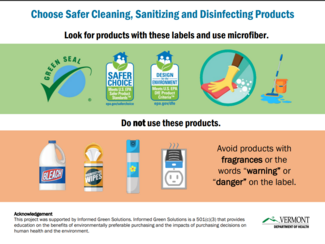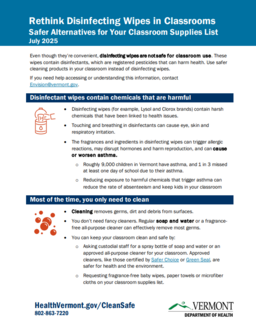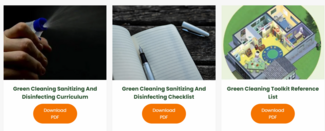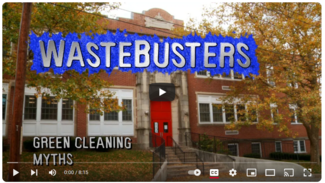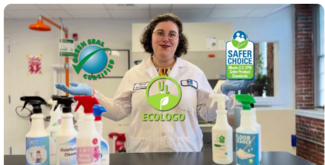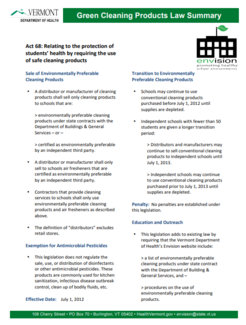Cleaning Safely in Schools
You can use safer cleaning products to protect yourself, the people around you and the environment. Safer cleaning products work as well as traditional products while reducing exposure to harmful chemicals, improving indoor air quality, and helping to protect the food we eat and the water we drink. Choosing safer cleaning products creates healthier spaces for everyone and reduces pollution.
In 2012, the Vermont General Assembly passed Act 68, requiring commercial vendors to sell only third-party certified environmentally preferable cleaning products to schools. This means schools should only be using safer cleaning products.
Read the Green Cleaning Law Summary



